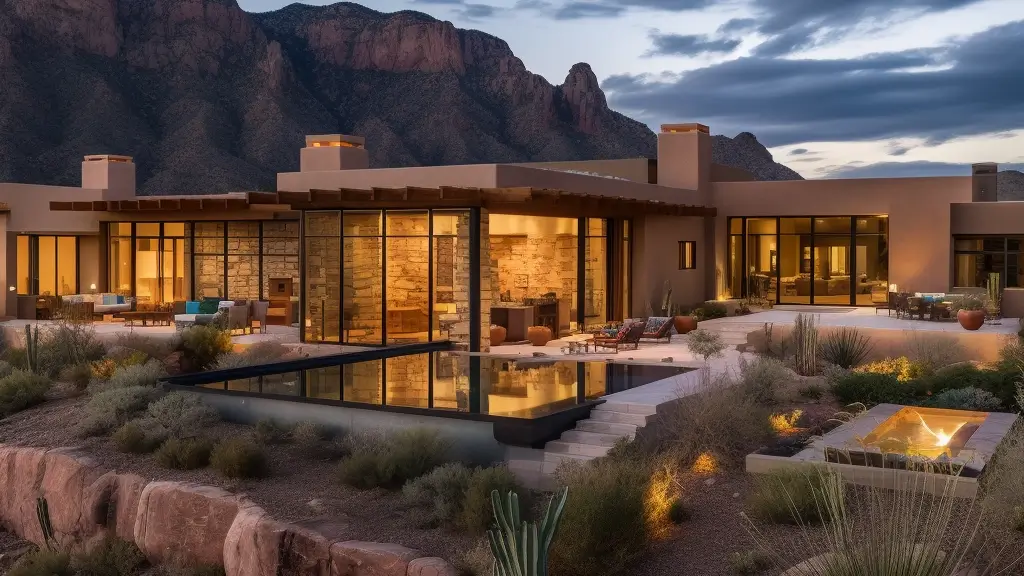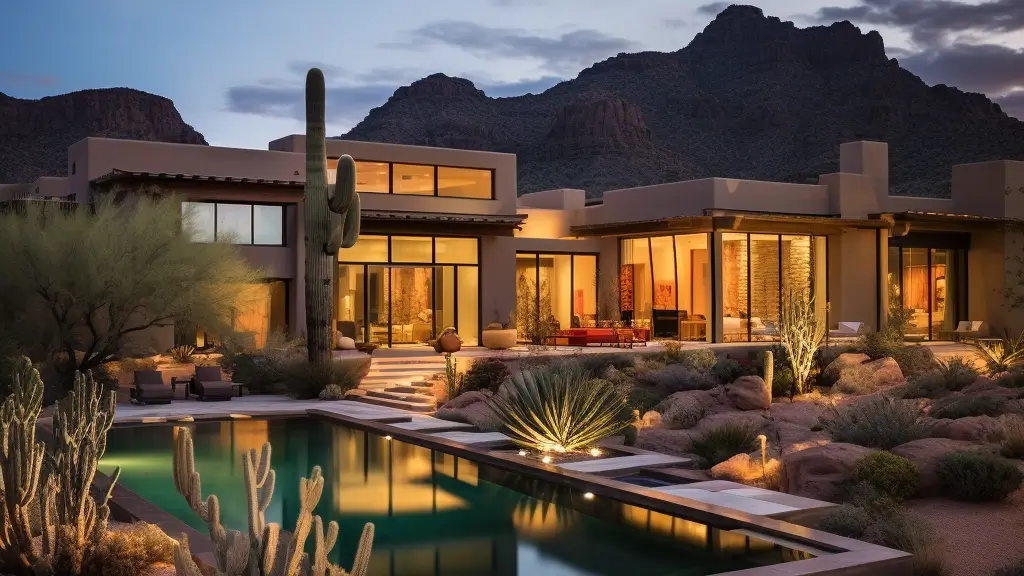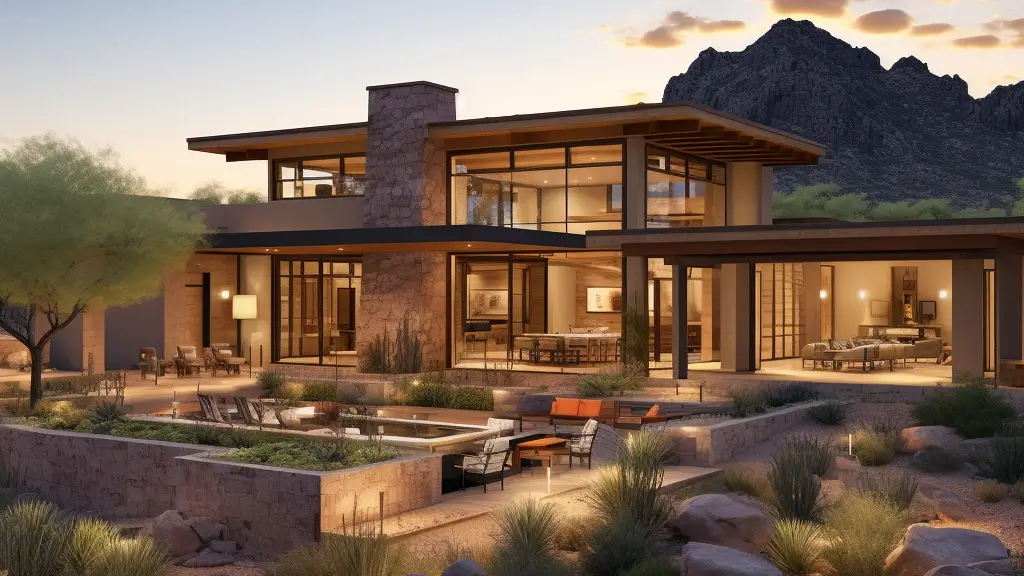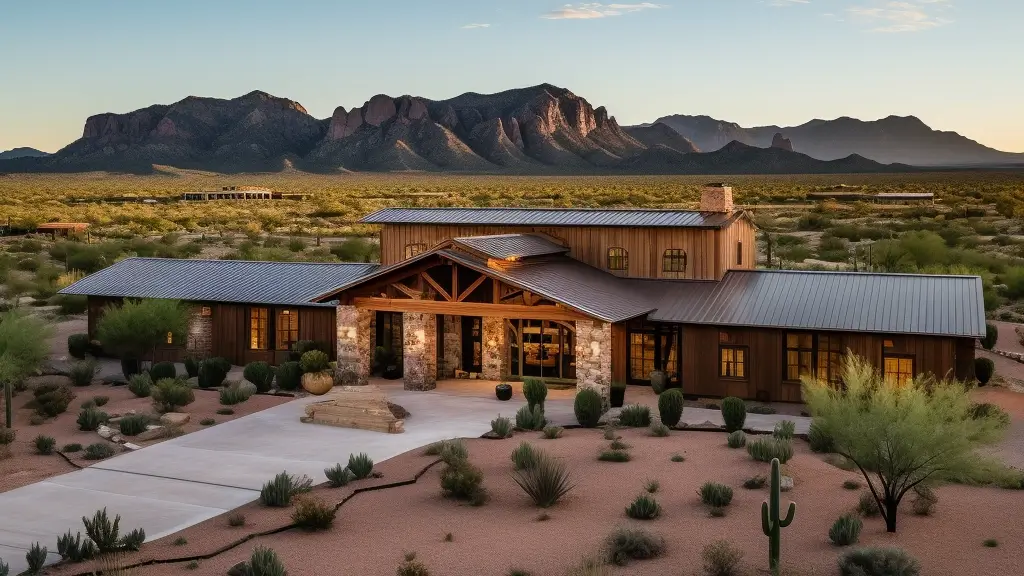Choosing the right custom home lot is key when building your dream home. Learn what you need to look for, and what pitfalls to avoid from a trusted Tucson-based general contractor & custom home builder Daniel Boveington.
Choosing the Right Location for Your New Custom Home in Tucson, Arizona
Careful evaluation of numerous factors should go into selecting the perfect lot for your new custom home. When assessing a potential home lot, it’s vital to consider the quality of nearby schools and the local crime rate, both of which can significantly impact the value and enjoyment of your home. Proximity to essential services and amenities such as hospitals and airports should also be factored into your decision-making process. As well, take note of nearby military installations, radio towers, and power substations, as these can influence everything from signal strength to property aesthetics. Don’t forget to verify the zoning of your potential lot, ensuring it allows for your intended home size and usage. Consider your daily work commute, as a convenient location can save you time and stress. Most importantly, study the housing comparables or ‘comps’ in your chosen area to understand the local real estate market and to guide you on the appropriate size of house to build in relation to your budget and future resale value.
“Often we get swept away by the breathtaking views of the valley when selecting a site for a new home. However, we can’t fail to consider the significant costs associated with bringing utilities to remote locations or clearing land filled with large boulders and caliche. This soil layer, where particles are cemented together by calcium carbonate, can pose a considerable challenge and expense. It’s crucial to factor in all these elements before making a final decision on your custom home lot.”
Daniel Boveington, Trusted Tucson-based General Contractor and Custom Home Builder
To avoid a situation where the cost to build is so expensive, prospective, would be happy home-owners end up selling their dream lot due to far too many unforeseen expenses. Follow this checklist to avoid major mistakes when evaluating your new lot for your future dream home.
Checklist to Avoid Expensive Mistakes When Selecting Your Custom Home Lot
- Zoning Review, Minimum Lot Sizes, Building Restrictions: Understand any limits regarding the type of building, size, and design. In Pima County there are setback requirements, minimum lot sizes based on zoning, maximum height and type of use restrictions. Here is a guide to determine if the zoning on the lot you are evaluating will fit with your plans: https://www.pima.gov/1175/Pima-County-Zoning-Code-Quick-Summary-Gu Ensure the zoning laws permit your intended home size and usage.
- Access to Water at Your Lot Line: Confirm availability of municipal water supply. In Pima County, you can’t get a permit to drill a well if you own less than 5 acres of land. If you are able to drill, you might have to drill down 500 feet to find a reliable water source. If there is currently no water to the lot line it could take an undetermined amount of time and coordination to extend nearby water. This is usually handled by the developer in established areas. Certificate of Assured Water Supply (AWS) is a document that developers must provide to the Arizona Department of Water Resources. The AWS demonstrates that a 100-year supply of water is physically, legally, and continuously available to serve the developer’s customers and future needs.
- Access to Electricity and Natural Gas at Your Lot Line: Ensure availability and accessibility of utilities like electricity, and gas. If you are purchasing an improved lot you should expect that power, water and gas are already at the lot line. You may also consider which data provider is in the area.
- Road Access: Confirm easy access to and from main roads. If the lot is between neighbors, will you require an easement to access your lot? If there is no access to the lot this can result in an untenable situation. If roads are present you may need permission from the HOA, City or Pima County to connect to existing roads. This detail is handled during your site engineering which is usually incorporated in the work your architect will handle.
- Soil Type and Boulders: Many of the most beautiful lots in Pima County are in canyons and on hillsides. The views are priceless but the cost of engineering a building pad and digging through very hard caliche can be tens of thousands of dollars more than expected.
- Size of Homes in the Area: Study housing comparables to understand the local real estate market. The bank will consider these comps when determining how much to lend on your project. Overbuilding for an area may result in a home that’s harder to sell and the bank may only lend 70-90% of the construction cost in this case.
- Selling Price of Homes in the Area: Investigate home prices in the area to ensure an appropriate investment. This will give you an understanding of what you can spend to build. If the comps of 4000 SF homes in the area are selling for $300/SF then you should consider targeting $250/SF to ensure your final appraisal is well below area comps. If your construction costs are 80% of the final appraised value you can most likely avoid paying mortgage insurance when your construction loan converts to a traditional mortgage at the end of the project.
- Lot Clearing Restrictions: Identify any restrictions on clearing the lot. The subsequent expansion on a non-hillside lot, by less than 25% and not violating the spirit of the grading ordinance, of an exempted or approved graded area. The clearing, brushing or grubbing of an area of less than 14,000 square feet, on a non-hillside lot.
- Proximity to Flood Zones: Research whether your lot is located in a flood zone. In Arizona we have 100 year floods that can occur in areas that seem to be dry most years. If you build in a flood zone you may not be able to get insurance on your home or bank financing.
- HOA and CC&Rs Review: Look into the rules and regulations set by the Homeowner’s Association and Covenants, Conditions, and Restrictions. In addition to the City of Tucson, and or Pima County the CC&Rs, or covenants, conditions, and restrictions, are a set of rules that govern the use of a piece of real estate in a community. They are often referred to as homeowner association covenants or simply covenants. CC&Rs can regulate a wide array of community rules. For instance:
- The type of garbage cans allowed
- Whether parties can open businesses in the community
- What color you can paint your house
- Whether you can leave your laundry out to dry
- What type of mailbox you may install
- Where overnight guests can park and how long they can stay
- Whether parties can open businesses in the community
- What color you can paint your house
- Whether you can leave your laundry out to dry
- What type of mailbox you may install
- Where overnight guests can park and how long they can stay
- Proximity to Hospitals: Consider accessibility to medical facilities. Research nearby hospitals and emergency services.
- Fire Department Services in the Area: Ensure proximity to fire department services for safety.
- Proximity to Public Transportation: Consider access to public transportation for convenience and potential future needs.
- Impact Fees: Inquire about any impact fees for new construction. Some areas may charge additional fees for new homes.
- Soil and Geology Report: Obtain a soil and geology report to assess the foundation requirements of your lot.
- Drainage of Your Lot: Assess the lot’s drainage to avoid potential water damage.
- Slope Analysis: Understand the slope of your lot to determine any potential challenges in construction.
- Schools in the Area and Their Ratings: Research local schools and their quality for potential future needs.
- Tax Rates: Determine local tax rates to understand potential ongoing costs.
- Interior Fire Suppression Zoning Requirements: Check whether homes over a certain size need specific fire suppression systems. For example In Pima County, large homes built on the edge of the district are required to have sprinklers installed in every home. Fire officials want the requirement extended to all new homes built in fast-growing areas of Marana and Pima County. According to NFPA 13, all newly constructed commercial buildings that are 5,000 square feet or larger are required to have fire sprinkler systems. The average cost to install a residential fire sprinkler system is about $1.60 per square foot.
- Landscaping and Hardscape Requirements: Understand the regulations for landscaping and hardscaping of your HOA and your municipality. In most site plans your architect will be required to add water collection, grading to control run-off, retaining walls if you’re building on a hillside or the slope of your lot is excessive.
- Presence of Saguaro Cactus and Protected Plants: Understand any protected flora on the lot that might affect construction. You can apply to move or relocate a saguaro cactus through the Arizona Department of Agriculture (AZDA). You can contact the local office for current rules and timelines.The permit fee is $7, and tag fees are: $8 for each saguaro. $6 for other protected native plants and trees. $6 for each cord of wood.
- Area Lighting Restrictions: Understand any restrictions on external lighting. If you are building in an HOA you’ll want to understand what exterior lighting restrictions are in the CC&Rs. Tucson and Pima County have had light control laws for close to two decades, some of the most strict in the country. The city’s local Lowell Observatory was concerned that pollution would limit its telescope’s capacity. Tucson adopted an outdoor lighting ordinance on June 5, 1972, so that night lighting wouldn’t interfere with its astronomical observatories.
- Time Needed to Navigate City of Tucson or Pima County Development Services: Consider potential bureaucratic delays in the planning and building process. Bringing together your architect and custom home builder right up front can help avoid mistakes and delays. Typically plans can take around 15 days for a first review and often take several revisions and submissions before a permit is issued and construction can begin.
In summary, building a property in Tucson or Pima County entails more than just design and construction elements. It demands a thorough understanding of environmental, regulatory, and logistical considerations. From assessing slope and rock conditions, observing the presence of protected plants such as the Saguaro cactus, complying with stringent area lighting restrictions to navigating bureaucratic delays inherent in the city’s Development Services, each factor plays a crucial role. Prospective future home owners are advised to collaborate closely with their architect and builder from the onset to minimize potential pitfalls and expedite the construction process.
Give us a call and we would be happy to help with your evaluation and recommend an architect to help research these important considerations for your new custom home!



